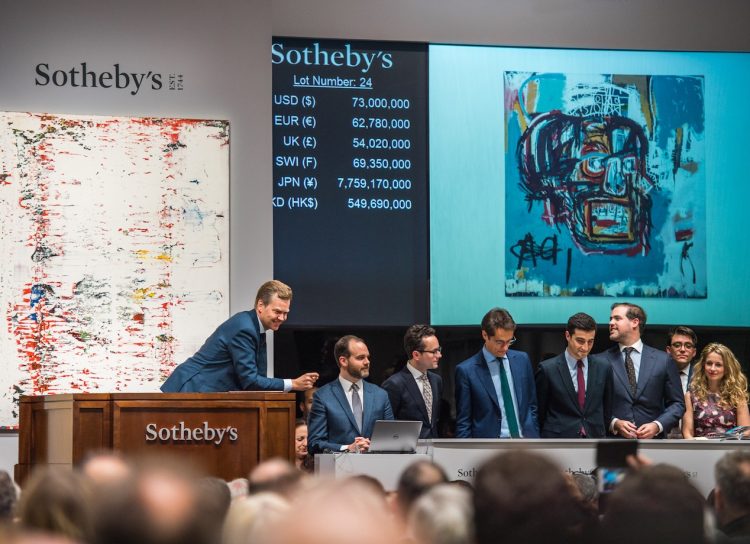Auctions have long been a cornerstone of commerce, connecting buyers and sellers across centuries. Whether for art, antiques, rare collectibles, or real estate, auctions have always been a place of high stakes and even higher emotions. But behind the bidding wars, the fast-paced hammering of the auctioneer, and the complex financial transactions, there exists a hidden language — a secret communication system developed over time to help facilitate negotiations, influence outcomes, and ensure that deals are made discreetly and efficiently.
While many might associate auctions with transparency, the reality is far more complex. From discreet gestures to coded phrases, auction houses and participants have historically relied on subtle cues to signal intentions, preferences, or even manipulate the bidding process without uttering a single word. These secret codes, developed over generations, are still in use today, albeit in more modern forms, helping savvy participants navigate the highly charged atmosphere of auctions.
In this article, we’ll explore the history and evolution of auction language, diving deep into the hidden communication systems that continue to be used today. We will decipher these secret codes, provide modern examples, and examine how these subtle methods still play a role in auction rooms worldwide.
The Origins of Auction Language: Secrets in Plain Sight
The roots of the auction language can be traced back centuries to the early days of trading. Ancient civilizations such as the Egyptians, Greeks, and Romans used various forms of barter and trade that often included public auctions. However, it wasn’t until the late medieval period that auctions began to resemble what we recognize today — fast-paced, highly structured events often involving wealthy individuals, estates, or corporations.
During the 18th and 19th centuries, as global trade expanded and wealth increased, auctions became an essential way of transferring valuable goods. As the stakes grew, so did the need for a method of communication that was discreet and efficient. Auctioneers, buyers, and sellers needed a way to signal agreements, bid intentions, or other actions without revealing too much to the general public.
One of the earliest forms of secret communication involved body language. An auctioneer, for example, would subtly nod or raise an eyebrow to signal a particular bidder to increase their offer. Such non-verbal cues allowed auction houses to create a smoother flow of transactions while maintaining an air of secrecy around the process. This subtle communication was vital in managing the psychology of bidders, especially when high-value items were on the line.
The Rise of Coded Phrases: Words That Mean More Than They Say
As auctions grew more sophisticated, so did the need for a coded language that could help manage complex deals. This is where coded phrases entered the scene. Many auction houses developed their own sets of phrases and jargon to help keep bids, intentions, and strategies under wraps.
One common phrase you may hear in modern auctions is “reserve price.” The term itself seems innocuous enough, but it carries a deeper meaning: the minimum price that the seller is willing to accept before the item can be sold. Auctioneers and sellers use this phrase as a subtle hint to potential bidders that they should be aware of the item’s value but should not overbid too quickly.
In addition, auctioneers use “call” and “pass” as common coded terms. When an auctioneer calls an item, it means the bidding process is open, and potential buyers can begin their offers. On the other hand, when the item is “passed,” it means no satisfactory bids were made, and the item is withdrawn from the sale. These seemingly simple words conceal an intricate process — particularly for those familiar with the bidding process — signaling when an auction has lost momentum or when a seller is unwilling to negotiate further.
An even more complex example is the term “chandelier bidding”, which is often used in high-end auctions. This phrase refers to a technique in which an auctioneer notices someone signaling through subtle gestures — like tapping their fingers, adjusting their posture, or even a slight look — to place bids without verbally announcing them. The term, though whimsical, is a reflection of the age-old tradition of auction houses providing coded methods of ensuring the right people can communicate without disrupting the flow of bidding.
Subtle Gestures and Body Language: The Unspoken Auction Vocabulary
While coded words and phrases are effective, they are not the only tools in the auction language arsenal. Body language plays a crucial role in auction rooms, allowing participants to communicate their intentions without saying a word. In fact, much of what happens in an auction room is dictated by these subtle, non-verbal cues. The most skilled participants are often the ones who can “read the room” — interpreting the body language of others to gain an advantage.
Take the classic “raised hand” gesture, for example. In most auctions, a raised hand signals a bid. However, the placement of the hand can have different meanings. A quick, casual wave of the hand can signal that a bidder is simply acknowledging interest in an item but does not intend to place a serious bid. On the other hand, a firm and deliberate hand gesture may signal a bidder’s strong intent to secure the item. Auctioneers and participants alike can easily pick up on these cues, and a skilled auctioneer can use these signals to adjust the pace or tone of the auction to their advantage.
Nodding is another common body language cue, often used by the auctioneer to confirm a bid or signal to others that the current bid is the highest. A slight nod can indicate that the auctioneer is ready to proceed, while a more pronounced nod can signal that the auction is approaching its conclusion.
Interestingly, eye contact is one of the most powerful and nuanced forms of communication in an auction setting. A bidder might make brief, direct eye contact with the auctioneer to signal their interest in a particular lot. Alternatively, a bidder may avoid eye contact to prevent giving away their intentions or to avoid being “caught” by other bidders.
These subtle gestures and cues may seem inconspicuous to the casual observer, but they represent a finely tuned system of communication that allows auction participants to navigate the high-stakes environment of the auction room.

Modern Usage of Auction Language: Codes in the Digital Age
As the world of auctions has evolved, so too has the language. The rise of online auctions and virtual bidding platforms has introduced new ways for participants to communicate — albeit through digital means. While some of the traditional auction codes and gestures are still in play, technology has changed how auction houses and buyers interact.
One major shift is the use of “proxy bids”. In the online auction world, a proxy bid allows a bidder to set a maximum price they are willing to pay for an item, while the system automatically places incremental bids on their behalf. Though not a “code” in the traditional sense, this digital tool has revolutionized the way auction participants engage. By automating the bidding process, online platforms have created a new level of strategy where the highest bid is not necessarily the one placed by the individual present at the auction, but rather the one that was placed silently in advance.
Another modern auction language component comes in the form of timed auctions. With the use of digital platforms, auction houses now frequently engage in timed bidding. In these auctions, the bidding period is predetermined and communicated to participants in advance, but the timing itself becomes a subtle form of communication. The last-minute bid, often placed in the final seconds of the auction, is an act of both strategy and psychological manipulation. It is the ultimate example of how a participant can use time as a weapon, creating a sense of urgency and competition even without a single word being exchanged.
The Ethics of Auction Codes: Transparency or Deception?
While auction language and codes have become an essential part of the auction process, there are some ethical concerns surrounding these practices. Some critics argue that the use of hidden communication systems, particularly the use of non-verbal cues or proxy bids, can lead to manipulation and unfair advantages in auctions. When certain participants can read and understand the secret language of the auction room, they may gain an edge over others who are less familiar with the practice.
Additionally, auction houses that utilize these codes may face questions about transparency and fairness. When a bidder can influence the outcome without fully participating in the bidding process, it may raise doubts about the authenticity of the auction itself.
Despite these concerns, many argue that auction language and codes are simply a part of the tradition and atmosphere that make auctions so unique. For those who understand the language, it adds another layer of excitement and strategy to the experience. For others, it’s simply a way to maintain the thrill of the game while ensuring that all parties can communicate effectively and efficiently.
Conclusion: Decoding the Auction Room’s Secret Language
The secret auction language is a fascinating and often overlooked aspect of the auction world. From body language and coded phrases to modern digital bidding strategies, these hidden communication systems have been honed over centuries to create a more efficient and engaging environment for buyers, sellers, and auctioneers alike.
While the auction world continues to evolve, the underlying principles of secret communication remain ever-present. Understanding this complex language, whether it’s through subtle gestures or strategic digital tactics, is crucial for anyone looking to navigate the competitive world of auctions. Whether you’re a seasoned collector, a first-time bidder, or simply someone fascinated by the intricacies of high-stakes sales, mastering the hidden language of auctions is an essential skill that can help you secure the treasures of your dreams — or avoid getting caught up in the whirlwind of fast-paced bidding.

















































